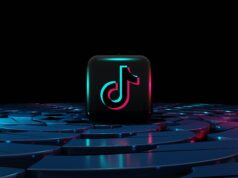 In this guest column, Alan McGlade reflects on subscription versus paid download and a la carte business models from his perspective as Digital Entertainment Ventures managing director and former MediaNet CEO.
In this guest column, Alan McGlade reflects on subscription versus paid download and a la carte business models from his perspective as Digital Entertainment Ventures managing director and former MediaNet CEO.
______________________________________________________
Digital Music on Rewind
by Alan McGlade
I was at the Digital Music East Forum in NYC last week listening to Sachan Doshi talk about Spotify. While he was sharing his vision for the future of music, I couldn’t help but reflect on the transformation the broadcast industry went through when cable television was introduced several decades ago.
Back then, broadcasters, TV critics and late night comedians practically laughed fledgling cable networks out of business. CNN was derisively called the Chicken Noodle Network and ESPN was dismissed as a 24 hour Australian Rules Football channel. Business reporters insisted that since TV was historically free, consumers with decent reception weren’t going to pay a monthly subscription fee. Today most everyone has cable. There are over a dozen cable news and business channels, and ESPN is a significantly more valuable enterprise than ABC.
Fast-forward to recorded music distribution at the turn of the millennium. Music file sharing was moving into the mainstream. There is no doubt the ability to get free music was a major driver but that wasn’t the only attraction for music fans. Perhaps more important was the ability to listen to almost any song, any time, without limitation. This was a radical change for consumers who were used to cycling through a handful of their favorite CDs, and one that permanently altered consumer behavior.
The first legally licensed use of digital music was for subscription services that offered unlimited on-demand streaming and downloads as long as the user remained a subscriber. The major labels argued that an unlimited-use subscription best replicated the experience of the original Napster and offered great value for the price. This spawned music subscription services developed by AOL, Yahoo, Virgin and other major brands. MTV developed an excellent service called Urge with great editorial and graphics. Each offered millions of tracks with unlimited on-demand streaming and downloads for a monthly fee.
Meanwhile the labels had an aversion to the sale of MP3 downloads. It was a titanic struggle to convince them to allow sales of downloads but we finally got it done. However, paid download stores didn’t really get much notice until Apple very successfully introduced iTunes as a vehicle to market iPods two years later.
The business and music press were highly skeptical about the idea of subscription services from the start. They argued that people did not want to “rent” music and that it was fundamentally unfair to ask users to pay a monthly fee and not allow them to keep the music if they canceled their subscription. After the launch of iTunes Steve Jobs weighed in. “People want to own their music”, he said. We countered that it didn’t make sense to just drag a business model that was attached to the purchase of physical goods into the digital world – the current generation of music fans is looking for access, not ownership.
Fast-forward eight years. Download sales have begun to flatten out and subscription radio and on-demand streaming services are proliferating from Slacker, Pandora and Rdio to Mog and Spotify. Spotify’s content and distribution “guru” Sachan Doshi, standing at the podium, explains that the music industry focus has been on paid downloads but there has been a fundamental misunderstanding of today’s music consumer. “People want access, not ownership,” he said. He is on solid ground. The business and music press generally agree.
Which brings me back to my thoughts on the cable television business. While it is true that the television subscription model was so successful that Comcast now owns NBC Universal, the paradigm is about to change once again. Television is undergoing another transformation as a wave of streaming options offer consumers an alternative way to view programming on their Internet enabled TVs, laptops and mobile devices in what the industry calls “over the top” viewing. It is still early innings, but it is already clear that forcing consumers to buy bundles of hundreds of basic and premium channels is not sustainable in the long term.
Which begs the question, what is next for the music industry? Is the model that was met with skepticism in 2002 going to be the one that succeeds in 2012 or is it going to be something else entirely? Too bad we can’t fast-forward again.
______________________________________________________
Alan McGlade has over two decades of experience in taking companies from early conceptual stage to significant market player in television, and digital media with an emphasis on music. He is currently a managing director of Digital Entertainment Ventures (DEV), which advises and invests in companies building the next generation of digital services and applications that are transforming media and entertainment. Previously McGlade was the CEO of MediaNet, which powers digital music and media delivery in the US and Europe.








Interesting history. The only thing I would consider adding to this well thought-out reflection would be where advertising fits in.
Let’s not forget the medium. It especially works when you compare the music industry to cable television. Is paying the monthly service worth the ad-free content? And if so, how do advertisers get their spoons into the pie? (Because, if history tells us, they will undoubtedly find a way to do so).
Music has gone from ad-filled radio to ad-free ownership and is now at a crossroads between the two. In addition to Alan’s pondering, I wonder if the future of music consumption (and television for that matter) will be driven by the desire for ad-free content rather than personal ownership.